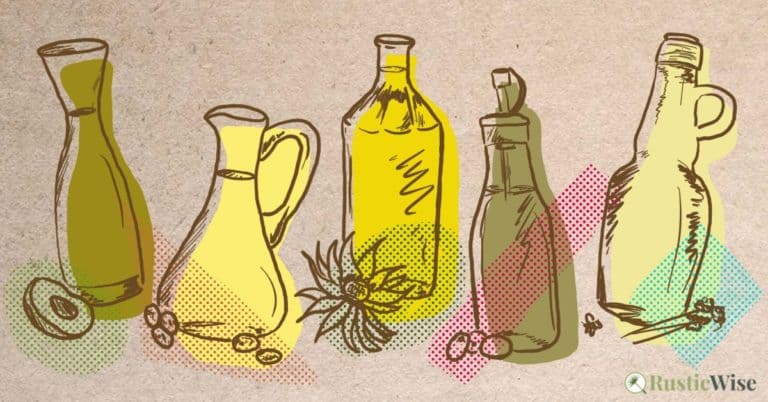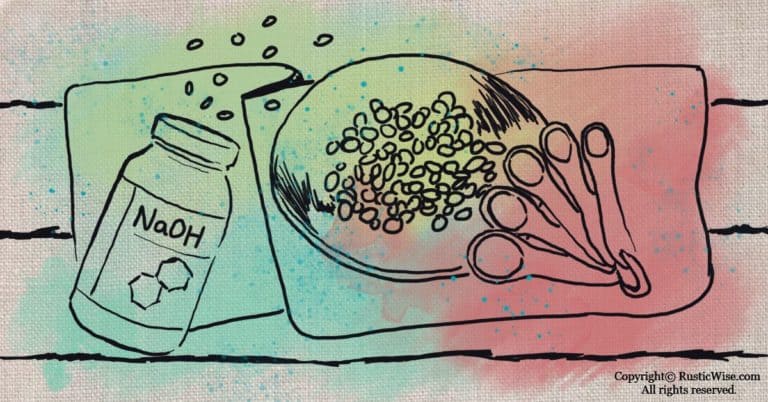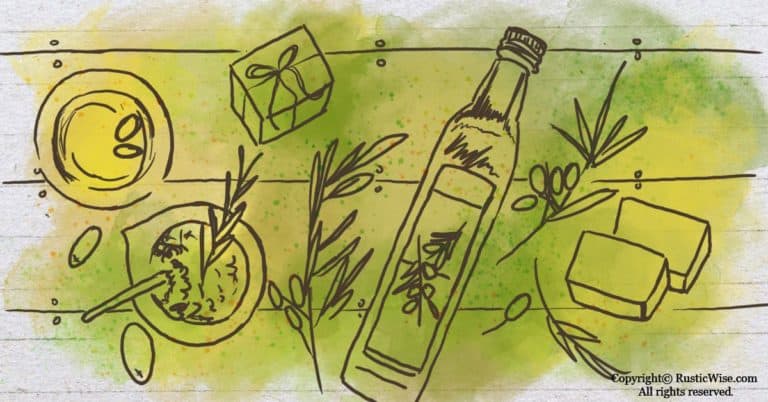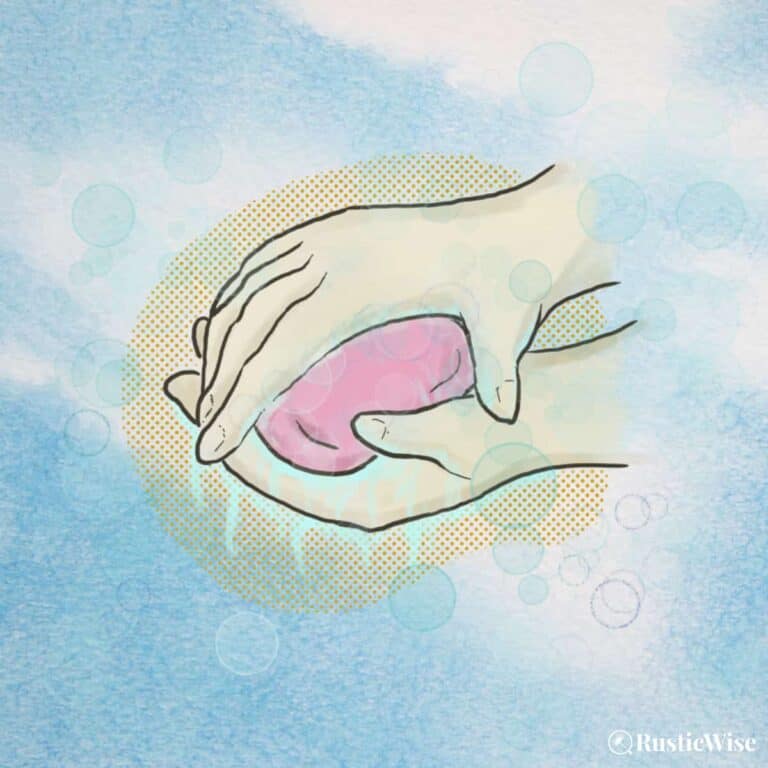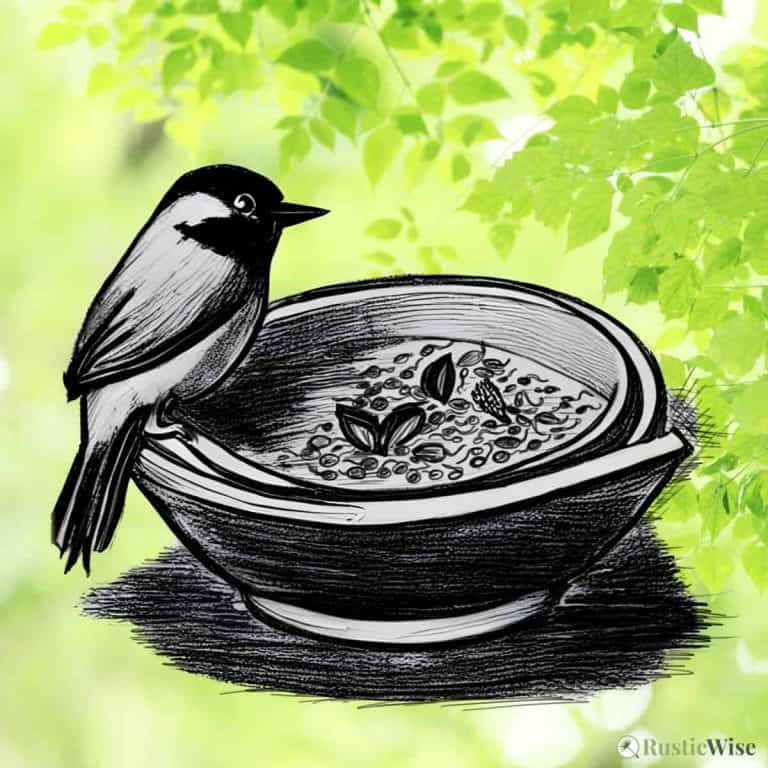Cinnamon in Soap: A Warm and Aromatic Addition
RusticWise is supported by its readers. When you purchase through links on our site, we may earn an affiliate commission. As an Amazon Associate, we earn from qualifying purchases. Thank You!
Warm and aromatic cinnamon is a versatile and wonderful spice to keep in your cupboard. It’s also a popular additive for homemade soap, either as a ground powder or as cinnamon essential oil. Less is more when using cinnamon in soap—when used in large amounts, it acts as a skin irritant.
Those with sensitive skin may want to use caution when using soap bars or skin products with cinnamon.
The cinnamon plant is commonly cultivated for its culinary spice. It’s also used for a wide range of medicinal and cosmetic purposes. Cinnamon has antibacterial properties, antifungal properties, and acts as a stimulant.
Read on to learn more about how to use cinnamon in handmade soaps, the two main types of cinnamon essential oils, and a cinnamon soap recipe.
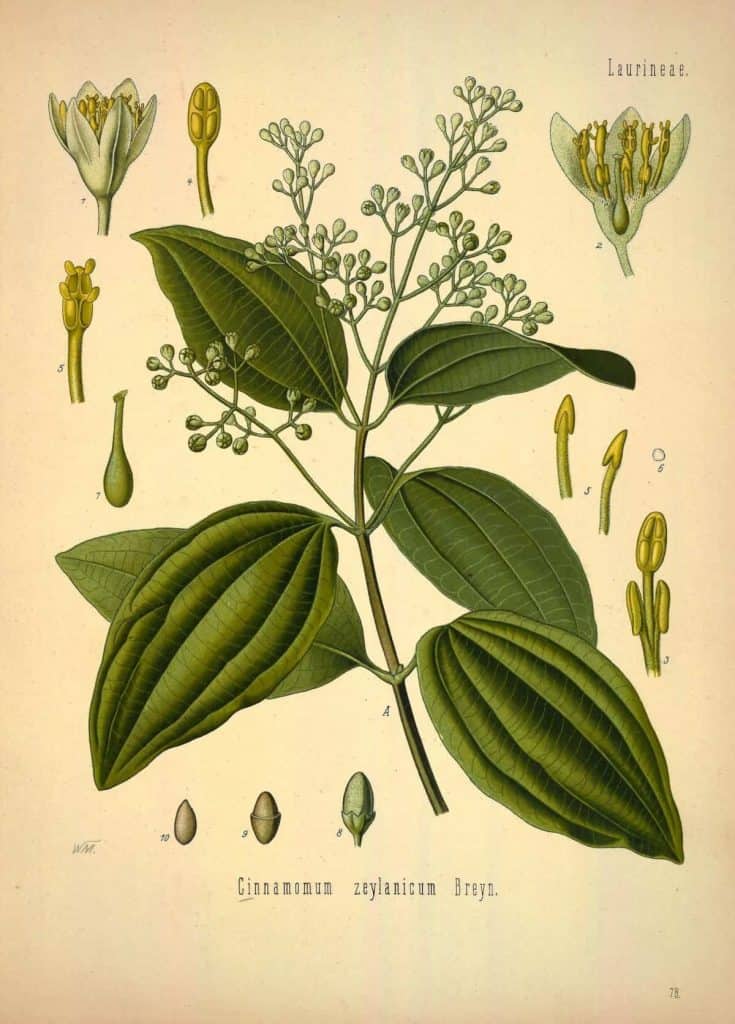
Credit: Biodiversity Heritage Library / Flickr
A closer look at the cinnamon plant
The cinnamon plant, also known as Ceylon cinnamon (Cinnamomum zeylanicum), or true cinnamon (Cinnamomum verum) is an evergreen tree that belongs to the laurel family. This tree is native to Sri Lanka, India, Myanmar, and is now cultivated in parts of the West Indies and South America.¹
The popular cinnamon spice is produced from the dried inner bark, which is coveted for its aromatic properties and sweet yet earthy taste.
There are many relatives of the Ceylum cinnamon plant, with a common one being Chinese cassia (Cinnamomum cassia). If you have cinnamon sticks or ground cinnamon in your spice cupboard, chances are it’s from the cassia tree.
There are other tree relatives including Indonesian cinnamon (C. burmannii), Malabar cinnamon (C. citriodorum), and Vietnamese cinnamon (C. loureiroi).¹
Cinnamon essential oil is derived from both the bark and the leaf, with each having distinct properties (which we’ll go into more detail below).
Here’s a fun fact—at one point in time, cinnamon was worth more than gold. In ancient Egypt, they used it for embalming rituals and other cultural traditions.¹
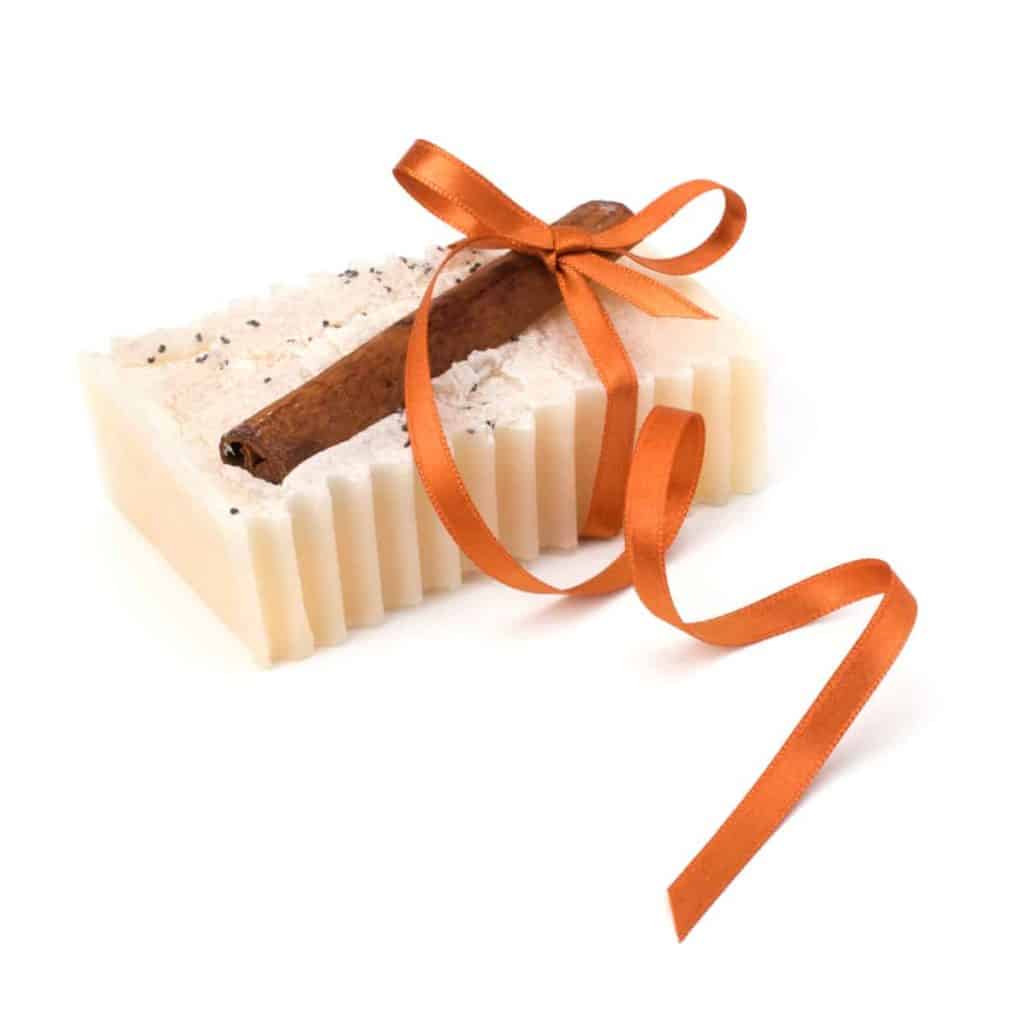
Credit: Vector State
Why use cinnamon in soap? Here’s how to create cinnamon scented soap safely
Typically, cinnamon in soap is used in two forms: as a ground powder, or as an essential oil. To get a lovely cinnamon scented soap, you’ll need to use a cinnamon essential oil (the scent from ground cinnamon alone is not enough to carry through to the finished soap when doing cold process soap making).
Is cinnamon essential oil safe for soap?
You may have heard warnings against using cinnamon directly on skin. To a certain extent, this is true, but a more accurate statement as it pertains to soap making and skin care is, “Don’t use too much cinnamon powder or cinnamon essential oils.”
Cinnamon is an intense spice and, when used in large amounts, becomes overpowering. With cinnamon essential oils, less is more.
Both the ground powder, and especially the essential oils, need to be handled with care. Only add small amounts to a batch of soap. It’s recommended that you wear gloves when handling cinnamon for soap, as it can irritate the skin.
If you’ve ever accidentally sniffed or ingested too much cinnamon powder, you know it’s potent stuff. I recently made my daughter a cup of eggnog and added a dash of cinnamon to the top. Normally I would mix it in, but this time I forgot. She took one sip and had a coughing fit. My bad!
When used as a powder, cinnamon imparts color, texture, and a decorative touch. It also acts as a mild astringent for skin (we’ll go over a few of the benefits of cinnamon in the section below).
Cinnamon essential oils provide the warm and spicy scent you expect when using a cinnamon soap bar. The oil derived from cinnamon leaf has more of a herbaceous aroma that strikes a note more similar to cloves than that sweet cinnamon aroma you’re expecting. (But it’s still warming and delicious!)²
The oil derived from the bark has the rich and sweet fragrance most people associate when they think of cinnamon. Unfortunately, it’s not recommended that you use cinnamon bark essential oil for soap!
Note: It’s important to keep in mind that you should use cinnamon leaf oil (C. Zeylanicum) in homemade soap rather than cinnamon bark oil in soap. This is because the oil derived from the bark is a dermal toxin. It’s an irritant and not recommended for use on skin or mucous membranes. It may cause a burning sensation.³
Cinnamon leaf essential oil, on the other hand, is milder, but should still be used in small quantities.
When making soap, don’t use over 6 grams of cinnamon leaf essential oil per 794 grams of soap.⁴
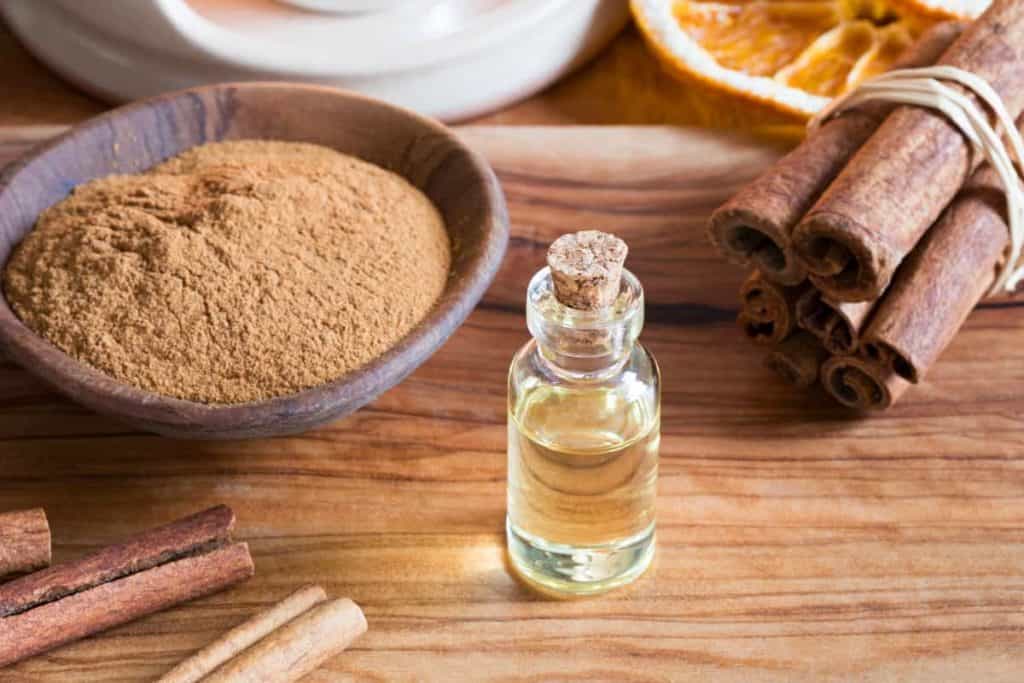
Cinnamon pairings
Try a few of these complementary aromas with cinnamon leaf essential oil:
- Cloves
- Cedarwood
- Lavender
- Lemon
- Orange
- Patchouli
- Rosemary
- Thyme
Tip: If you have sensitive skin, do a small patch test on skin before using any cinnamon-infused soaps or lotions. Wait 24 hours for signs of rashes or other adverse reactions.
You might like
Cinnamon Leaf Essential Oil, Therapeutic Grade, Pure and Natural Premium Quality Oil, 4 Fl Oz
- Premium quality; pure and natural cinnamon oil; non-toxic, no additives, unfiltered and undiluted with no fillers; therapeutic grade; suitable for Vegetarians and Vegans; packaged in the USA.
- Cinnamon leaf oil has a warm spicy musky smell and light yellow-green in color.
Found on Amazon
Check Current Price
Those in Canada and the UK should be taken to the product listing in your region.
Cinnamon soap benefits
You’ll often see cinnamon soap touted as a “uplifting” or “cleansing.” Let’s look at a few properties of cinnamon soap.³
Safety: Before using cinnamon essential oil, please check with your doctor if you’re pregnant or breastfeeding, or before using on young children.
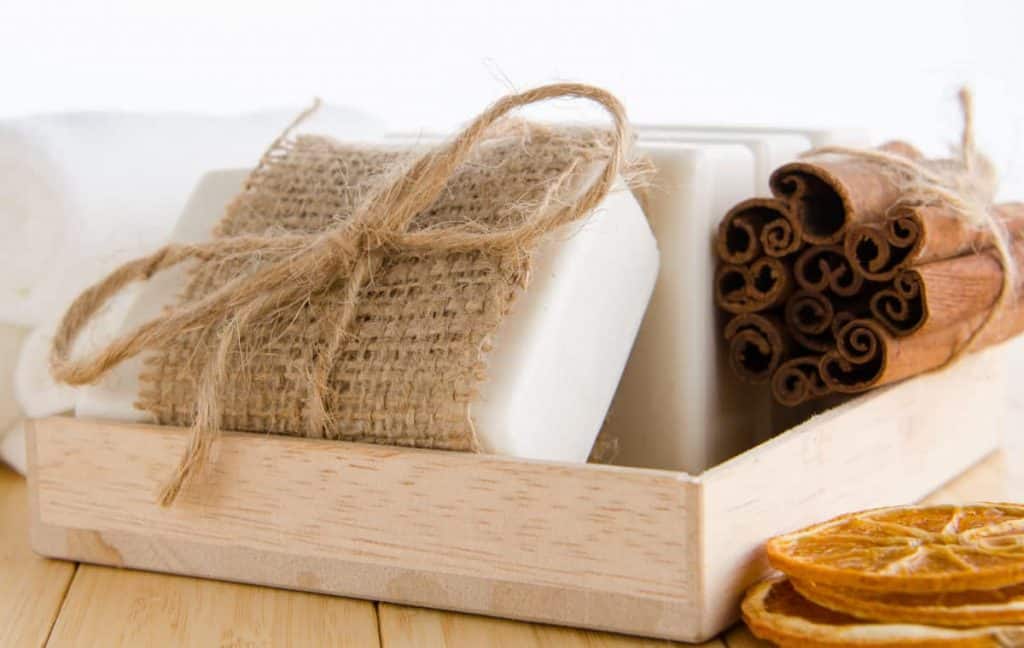
Cinnamon soap recipe
If you’re craving a warming and uplifting soap perfect for autumn or winter, you’ll love this delicious combination of apple cider with a hint of cinnamon and ginger.
I adapted this recipe from the awesome book, Simple & Natural Soapmaking by Nerdy Farmwife’s Jan Berry.⁴
Using apple cider (or apple juice) infuses the soap with a lovely fruity scent. This recipe calls for ground cinnamon, plus cinnamon leaf, and clove EO to enhance the fragrance.
Be careful when using these two EOs however, as they’re known to cause soap batter to thicken. So add them at light trace and make sure you have your soap mold all ready to go!
If you’re new to soap making, please read up on lye safety first!
Warm Apple Spice & Ginger Soap with Cinnamon
Yield: 7 to 8 soap bars (2.5 pounds/1.13 kilograms)
Supplies
- Digital kitchen scale
- Thermometer (digital, infrared, or candy thermometer)
- Immersion blender (stick blender)
- Stainless steel saucepan for melting the solid oils
- A large bowl for measuring the liquid oils into
- Heat-safe jug for the lye solution
- Rubber spatula for stirring and scraping
- Loaf mold
- Safety gear (goggles and gloves)
Ingredients
Lye solution:
- 4 ounces (113 grams) cold apple cider or juice
- 4.75 ounces (135 grams) distilled water
- 3.95 ounces (112 grams) sodium hydroxide lye
- 1/2 teaspoon ground ginger
- 1/2 teaspoon ground cinnamon
- 2 ounces (57 grams) shea butter
- 8 ounces (227 grams) coconut oil
Liquid oils:
- 3.5 ounces (99 grams) sunflower or sweet almond oil
- 14.5 ounces (411 grams) olive oil
Essential oils:
- 0.18 ounces (5 grams) cinnamon leaf essential oil (about 1 ½ teaspoon)
- 0.18 ounces (5 grams) clove essential oil (about 1 ½ teaspoon)
- Optional: 0.11 ounces (3 grams) orange essential oil (about 1 teaspoon), use a folded or Valencia type
- Optional: 0.14 ounces (4 grams) dark patchouli essential oil (about 1 ⅜ teaspoon)
- Prepare the lye solution. Put on your safety gear! Measure the apple cider and distilled water. Add to heat-safe jug. Measure the sodium hydroxide and slowly add to apple cider/water solution. Add the ginger and cinnamon powders and mix well. Allow the lye mixture to cool to around 100–110 degrees Fahrenheit (38–43 degrees Celsius).
- Measure and melt hard oils in a saucepan. Heat the shea butter and coconut oil in a non-reactive saucepan until melted, then measure and add liquid oils until well combined.
- Bring to trace. Once the lye mixture has cooled and is of similar temperature to the combined oils, carefully add the lye to the oils. Use an immersion blender (stick blender) to combine the soap batter until it reaches light trace.
- Add essential oils. Stir in essential oils (remember that these EOs may cause soap batter to thicken quickly!).
- Pour into mold. Pour the soap batter into a prepared mold. Use a sheet of wax or freezer paper to loosely cover, then wrap with a light towel or blanket. The apple cider and spices may cause soap to warm up, so peek once in a while for signs of cracking. If cracks develop, uninsulate and move to a cooler area.
- Set and cure. Allow the soap batter to cool completely and harden (at least 24 hours). If soap has hardened, unmold and cut into bars. If bars are too soft, allow it to set for several more days. Let the soap bars cure for 3 to 4 weeks in a well-ventilated room. You’ll get a longer lasting bar this way.
Enjoy your beautiful handcrafted soap!
New to making soap? 🧼❓
👉We have a fantastic overview on the whole soapmaking process here: read our Timeless Guide To Soapmaking.
If you would like to see our soapmaking posts organized by topic type, see our Soapmaking Collection.
Would you like more timeless tips via email?
Fun tips to help you live an independent, self-sustaining lifestyle. Opt-out at any time.


References
- Britannica, Cinnamon plant, https://www.britannica.com/plant/cinnamon. Accessed December 2021.
- New Directions Aromatics, Cinnamon Leaf Essential Oil, https://www.newdirectionsaromatics.ca/products/essential-oils/cinnamon-leaf-essential-oil.html. Accessed December 2021.
- West Coast Aromatherapy, Cinnamon, https://westcoastaromatherapy.com/article-archives/cinnamon/. Accessed December 2021.
- Berry, Jan (2017). Simple & Natural Soap Making. Page Street Publishing Co. ISBN-13: 978-1-62414-384-7.

Author: Theresa Tesolin
Theresa is co-founder of RusticWise. She helps people unleash their inner DIY spirit by encouraging them to get dirty and make or grow something from scratch.



